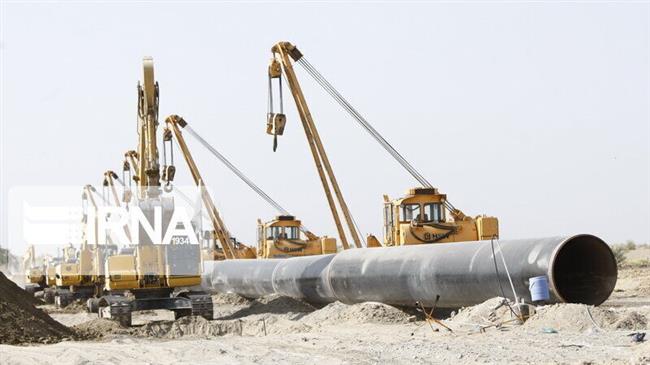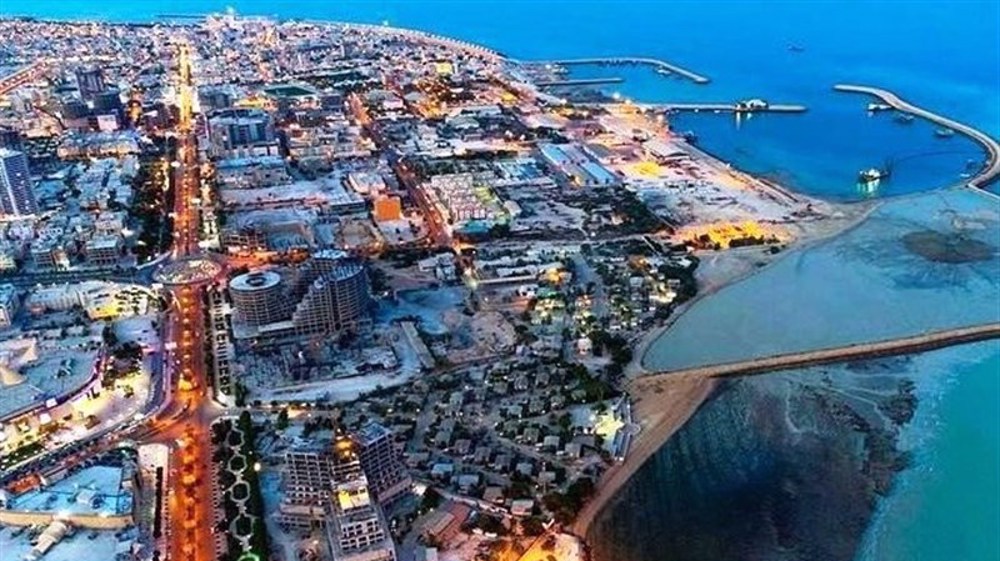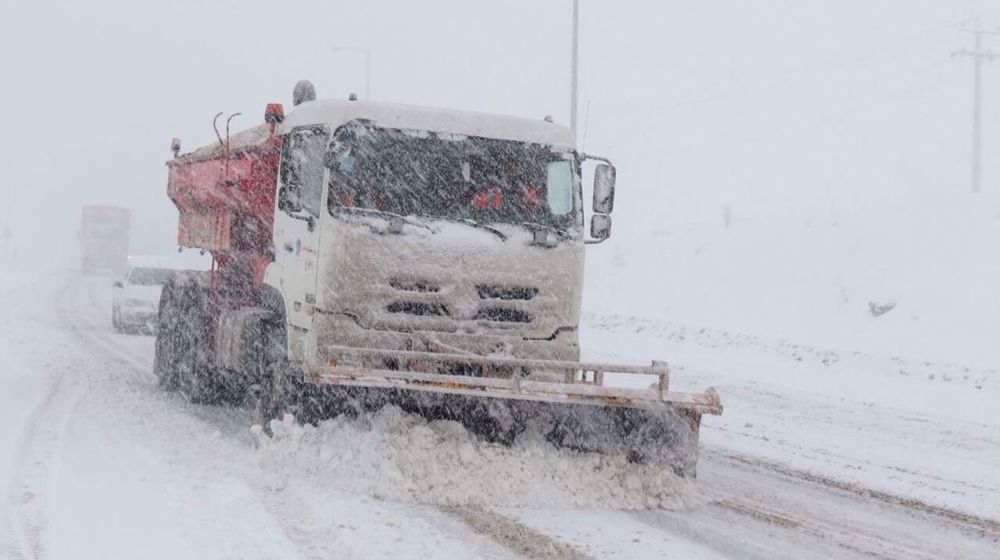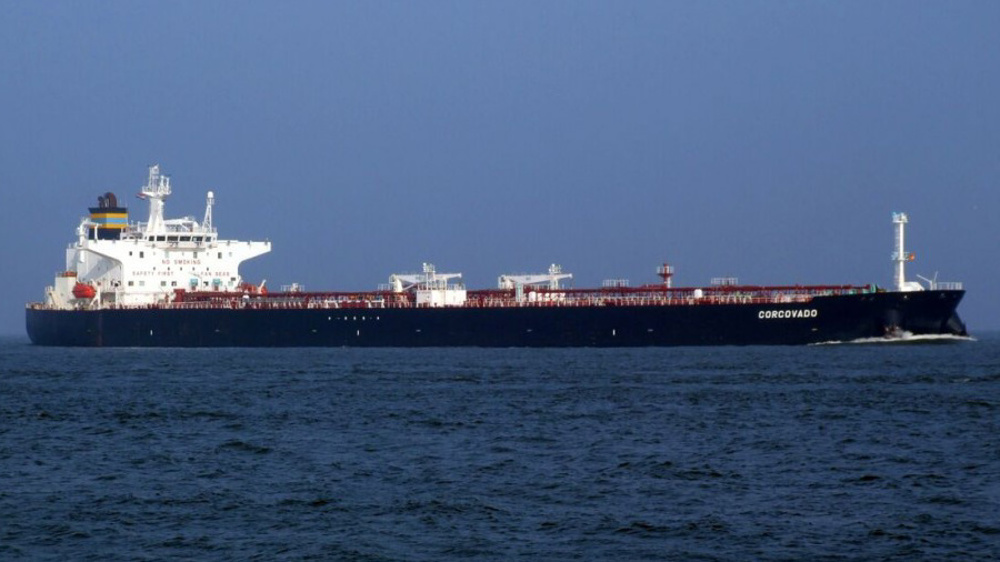New oil terminal gives Iran greater geopolitical power
A new oil exports terminal which Iran inaugurated on the Sea of Oman last week cuts travel time by five days, sharply reducing transportation expenses, its head says.
The $2 billion Jask terminal officially became operational by loading 300,000 barrels on an oil tanker last Thursday, with President Hassan Rouhani hailing it a "historic day" when Iran could rid of reliance on the single Kharg terminal.
"Considering the cost of fuel and leasing of a 2 million barrel tanker for a 5-day journey, using the Jask oil terminal reduces expenses by at least $300,000 in total," Reza Dehkordi told IRNA news agency on Wednesday.
"This creates a competitive advantage and gives the buyer access to faster and less expensive cargo in terms of lower fuel, ship rental, premium and port costs, etc. which is in the interest of Iranian oil buyers in general," he added.
This reduction in costs is even greater when the tanker is leased for a single shipment, with rentals reaching $70,000 per day.
The opening of the Jask terminal marked the first ever export operations from the Sea of Oman in the over 110 year history of Iran's oil, because all shipments were carried out from the Persian Gulf.
Iran relies on Kharg Island for more than 90 percent of its crude shipments and on smaller terminals of Lavan, Sirri and Soroush, while its condensate exports are handled by the Assaluyeh terminal, all of which are located in the Persian Gulf.
Kharg, once the world's largest offshore crude oil terminal, is geographically the best location for Iran's oil exports, but its facilities are in need of a major overhaul, having been put into commission first in the 1950s.
"The need for the Jask oil terminal as back-up to Kharg Island had always been felt," Dehkordi said. "We can now export Iranian oil at the lowest cost and safest conditions through Jask in the Sea of Oman."
Kharg Island, which lies about 180 kilometers southeast of Iraq and 50 km from the Iranian mainland, was the main target of Iraqi aerial bombings during the 1980s war of former dictator Saddam Hussein on Iran.
Saddam's initiation of the "tanker war" also provided a pretext for the US to deploy warships to the Persian Gulf in 1995 and base its fifth naval fleet in Bahrain across from the Iranian coast.
The US military presence is a constant cause of insecurity in the strategic waters, where Iranian patrol boats and American warships have squared up several times, threatening shipments through the Strait of Hormuz, the passageway for a fifth of the world's oil or about 18 million barrels per day.
The new route allows Iran to bypass the Strait of Hormuz, lending Iran a major geopolitical privilege. According to Dehkordi, the geopolitical significance of the terminal is in bringing Iranian oil closer to the market.
"For oil exports, we seek to attract our customers and be able to create a showcase where all countries could choose Iran as the first and most desirable country to buy oil," he said.
"To achieve this goal, we have to take big steps to reduce customer costs, and by building this terminal, we have made huge cuts in ship fuel consumption and rental expenses."
A 1,000 km, 42-inch pipeline carries heavy and medium crude oil from Goureh in the Bushehr province to Jask in the Hormozgan province. The current capacity of the pipeline is 300,000 bpd and will be completed to reach 1 million bpd, Minister of Petroleum Bijan Zanganeh said last week.
Dehkordi said, "Due to its location in a strategic region in the Middle East, Iran has always been a transit route for energy and oil in the world, and if we want to produce power, we must turn potential geopolitical capacities into actual capacities."
"It can be said that against Jask in Iran, the port of Fujairah has a strategic role because of being uniquely located near the Strait of Hormuz," he said of the UAE emirate.
Fujairah, once a sleepy fishing village, has transformed itself into one of the world’s top tanker refueling and oil storage hubs. It is currently the world’s second-largest bunkering port after Singapore.
Dehkordi said Jask could play a major role in the bunkering industry, as well as in ship logistics and repair and other services.
It could also significantly help increase Iran's oil storage by constructing 20 strategic petroleum reserves (SPRs), each with a capacity to store 500,000 barrels, he said.
Officials see establishing strategic reserves as a buffer against the impact of sanctions.
In January, an Iranian company said it had undertaken to build strategic reserves for 30 million barrels of oil on the Qeshm island in the Persian Gulf, where an export terminal is also being set up along with bunkering facilities.
"The development and increase of oil and gas condensate transmission lines to Jask in the future can improve the position of this terminal, where it can simultaneously export oil and gas condensate and become the most thriving export hub in the region," Dehkordi said.
"However, with the launch and prosperity of Jask, Kharg terminal will not lose its special position over time and it will always be the most important Iranian oil export terminal because the two terminals have major geographical differences," he added.
Spain jurists demand ties with Israel ties be cut
VIDEO | Press TV's news headlines
VIDEO | Iran honors top Science Olympiad medalists
VIDEO | Austrians arrested at Gaza protest in Vienna
10 killed in bus crash in western Iran
VIDEO | One-man-band journalism with Civili
5 Israeli forces killed as Palestinian fighters face up to regime’s war machine
VIDEO | An insider's view of the country: Persian Tahini, Royan in Mazandaran












 This makes it easy to access the Press TV website
This makes it easy to access the Press TV website